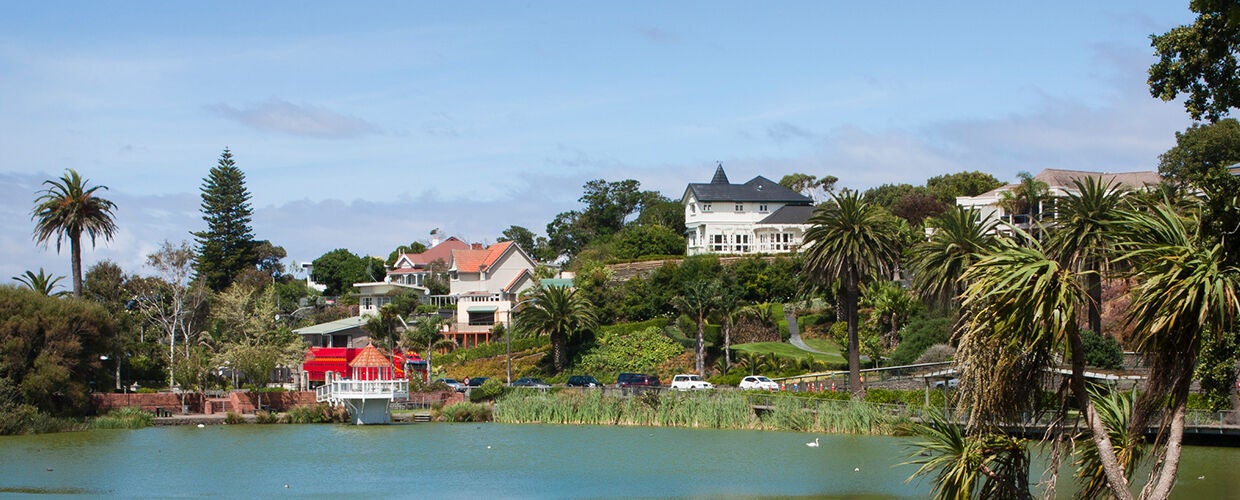The Affordability Map

But with wages rising and property prices cooling, while interest rates linger at record lows, there are signs that more Kiwis are finding the property ladder is within their reach – as evidenced by the rise in first home buyers, who now make up around one in four purchasers.
But what’s within buyers’ reach in one part of the country, might not be in another; even from suburb to suburb across our cities, average incomes and house prices vary considerably.
So what is meant by ‘affordable’, and how is it calculated?
One widely recognised formula is the median multiple, calculated by dividing the median house price by the median before-tax annual household income. It’s a very simple equation, but one that’s relied on by the likes of the World Bank and the United Nations.
According to the Demographia International Housing Affordability Survey: 2018, a median multiple of three indicates “affordable” housing. Between three and four is “moderately unaffordable”, and the scale rises from there.
Finance website interest.co.nz calculates regularly-updated multiples, based on median house prices as reported by the Real Estate Institute of New Zealand. It calculates median household income as one full-time male median income, plus half of one female median income, both in the 30-34 age range, with the family’s income topped up by Working For Families support.
While not definitive, when plugged into the median multiple formula, the model gives an insight into housing affordability across the country.
Nationally, affordability levels have remained static over the past year – sitting at 6.33 in October 2018. But there are wide variations between suburbs and regions.
Despite house-price inflation of 14 percent over the past year, Whanganui’s median house price of $240,000 and median multiple of 3.1 make the river city New Zealand’s most affordable housing market.
Invercargill, too, has seen sharp price rises (up 11%) but remains one of our most affordable cities (median multiple: 3.9).
In the next band, with multiples of between 4 and 5 are a range of locations from Gisborne (4.04) and Timaru (4.16); to Rotorua (4.71); and Palmerston North (4.79). While slightly less affordable, New Plymouth (5.14); Christchurch (5.36); Hastings (5.57); Dunedin (5.66); and Whangarei (5.98) offer a range of lifestyle and employment opportunities, while still more affordable than the national average.
Slightly above the average, Nelson (6.44); Napier (6.47); and Hamilton (6.63) remain attractive for those looking for options outside our most expensive centres.
With a median multiple of 12.24, Queenstown Lakes rates as our least affordable market – with the numbers skewed somewhat by the luxury residences, lower-paid hospitality jobs, and the premium buyers will pay for stunning scenery.
Tauranga comes in with a relatively high score of 8.02 – but compares favourably with Auckland (9.32). Auckland’s overall figure reflects a range, from around 9 in Manukau and Waitakere, to over 10 in the central city and North Shore; still high, though static house prices bode well for an improvement.
The biggest surprise is Wellington. Much has been made of its stellar housing market during 2018, with median prices up by more than 14 percent. However, those increases have been tempered by strong regional employment and wages. Up from 5.14 in 2016, the Wellington region’s median multiple of 6.12 is still below the national average. In the city itself, it’s slightly higher at 6.32. But Upper Hutt (5.12); Lower Hutt (5.78); and Wairarapa (5.07) are significantly more affordable.
On their own, these calculations suggest it’s still a stretch for many to buy in some markets – though they do focus on a household at a relative low-point in its buying power. Older families and young people without kids will have greater home-buying clout; plug their household finances into the equation and the results will be very different.
The calculations do provide a broad map of the relative affordability of different locations. Beneath city-wide figures though, as any seasoned home buyer knows, there are often significant variations in values from street to street, suburb to suburb, and relative bargains to be found.
The hope for many will be that with rising incomes, plateauing property prices and lower-for-longer interest rates the affordability arithmetic will improve further, bringing the dream of home ownership within reach for more New Zealanders.